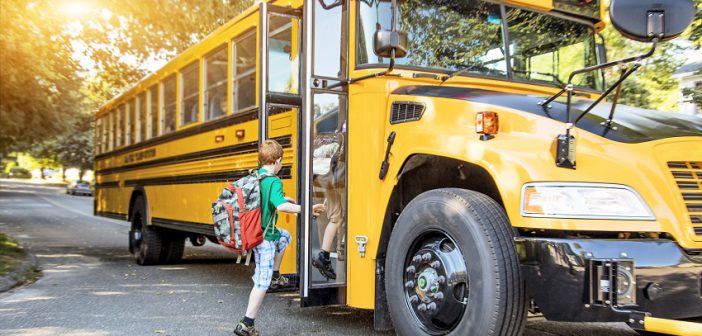It’s back-to-school time, and returning-to-school preparation should include safety considerations. Here are some of our top tips to help keep students safe when traveling to and from school and during school studies and activities.
Getting to and from school in a car
Wear seat belts! If you are driving your kids to school, you need to be aware when entering a school zone and respect the speed limits. It’s better to slow down as much as possible. Stop when approaching a school bus that is loading or unloading students.
Please pay attention to traffic and school crossing guards and follow their instructions and signals. Always be on the lookout for children at bus stops, near buses, on sidewalks, near school buildings, and in school parking lots.
Avoid passing other vehicles, changing lanes, and making U-turns when driving in a school zone. Choose to only text or speak on a mobile phone if you can do so hands-free. Also, do not use spaces or lanes reserved for emergency vehicles or people with disabilities. Children should be instructed never to enter someone else’s car without your permission.
On the school bus
It’s essential that children arrive at the bus stop at least five minutes before a bus is scheduled to arrive. They should not play in the street or roughhouse around a bus stop, nor should they ever walk in a bus driver’s blind spot or behind a bus.
Before getting on or off the school bus, please wait for it to come to a complete stop. When on the bus, children must remain seated, keeping arms and legs inside the bus and not dangling out of the windows or in the aisles. Noise and shouting should be discouraged, and children should not distract the bus driver while the bus moves. They also should not drink or eat on the bus to avoid choking incidents if the bus needs to stop suddenly or encounters a depression or bump in the road.
Riding a bike to school
If your child is permitted to ride a bike to school, they should wear a bicycle helmet to reduce the risk of fall injury and avoid traffic tickets. Children riding on the roads must be taught to ride on the right-hand side of the street in the same direction as traffic and to obey all traffic rules. Children must also know how to use hand signals when turning. Help your child choose the safest route to school and back, and encourage him to ride with one or more friends.
Walking to school
Children should leave early enough to arrive on time for classes and walk along a safe route daily, avoiding shortcuts. Instruct children to return home immediately after school and only go elsewhere if you have permission. They need to walk on public sidewalks and streets and preferably in numbers. If a child is old enough to walk to school, walk with him the first couple of times.
Children must recognize and obey traffic signs, signals, and pavement markings, even when walking. Streets are only to be crossed at designated crosswalks after looking both ways. Your child must refrain from walking between shrubbery and parked cars and never speak to strangers. If a stranger attempts to talk with your child, they must report it immediately to you or teachers.
On the school playground
Parents must ask school administrators if the school playground is monitored when students are present and if there are school security camera systems on the premises, both indoor and outdoor. Any equipment positioned there must have shock-absorbing material around it, while swings should extend twice the swing set’s height.
Equipment should not have any roping due to strangulation risks, nor should sharp edges be present. If there is anything concerning the playground equipment, including unsafe spaces or elevated surfaces without guardrails, speak immediately to school administrators.
School supplies
When toting books to school, backpacks should have shoulder and back padding with wide straps. The total weight of the backpack should not exceed 15% of a child’s body weight. Selected art supplies need to be nontoxic and safe for children. Depending on the child’s age, it is recommended that some drawstrings be removed from clothing like hoodies and jackets.
Important information
Younger children should memorize their address phone number, how to contact parents, and how to dial 911 if necessary.
Parents must have emergency plans in place should an emergency take place, whether a natural disaster, violent crime, or family emergency. Whom to contact and where to go should be determined before the start of the school year. This will help children feel more confident and safer because they will know what to do.It’s a good idea to have your child carry a laminated card with crucial contact information and any medical conditions. Parents may also want to take a first aid course.
Finally, discuss bullying with your kids, from peer pressure, to social media, from drugs to drinking or smoking. Bullying should not be ignored and it’s essential that you keep a line of communication open with your kids.




